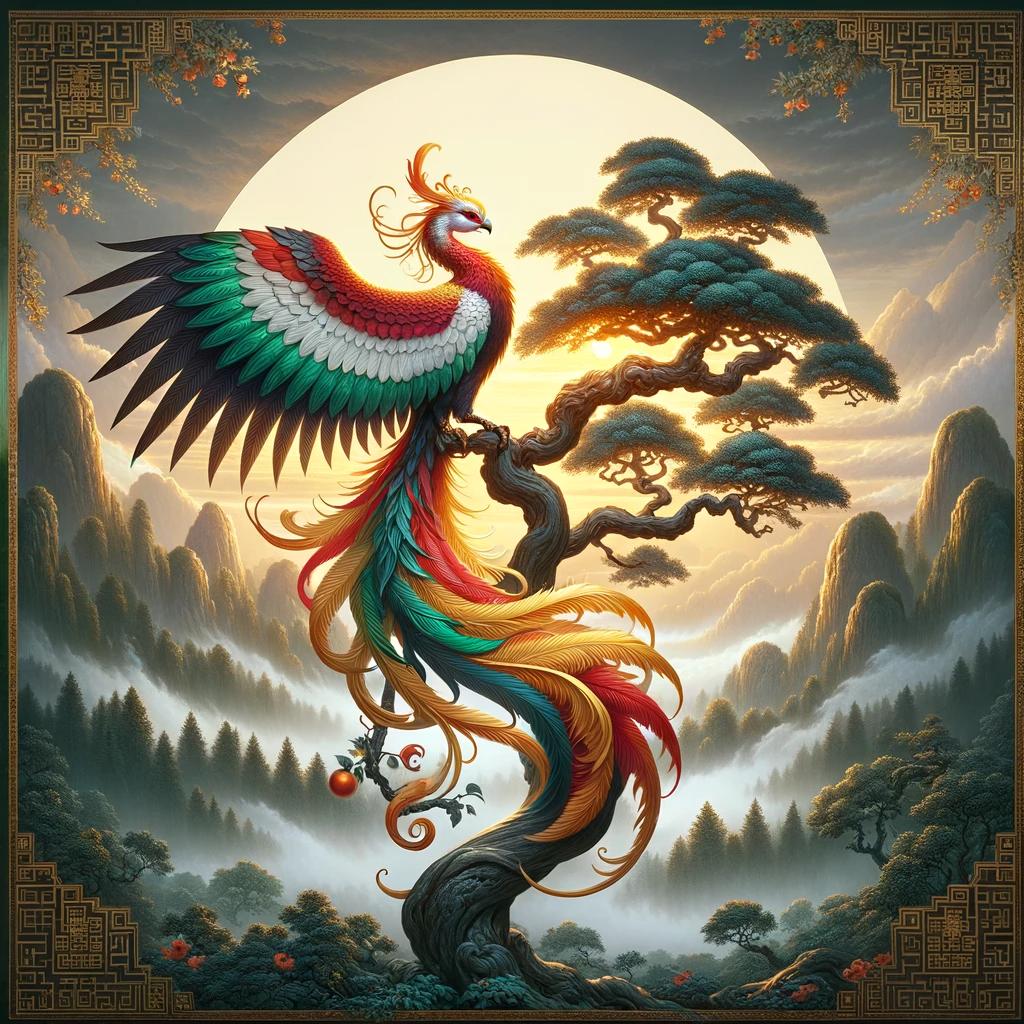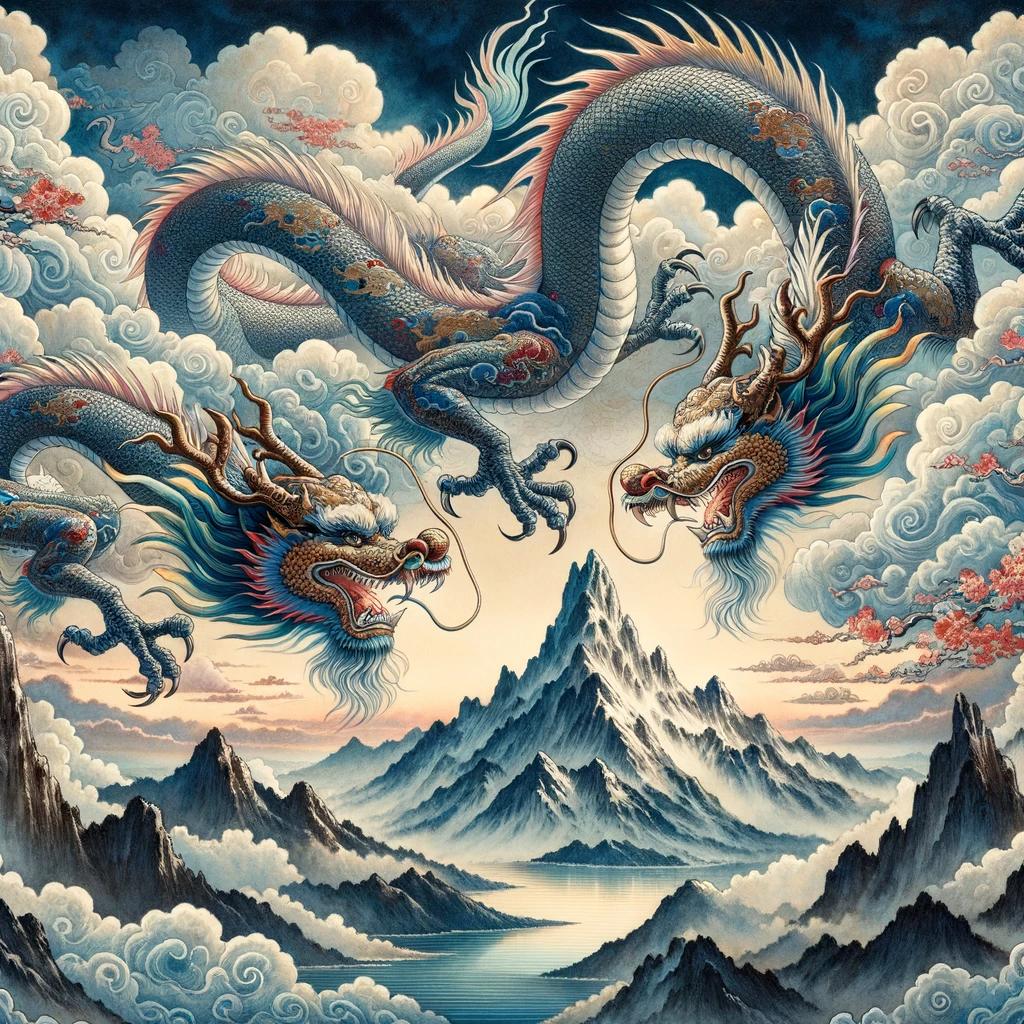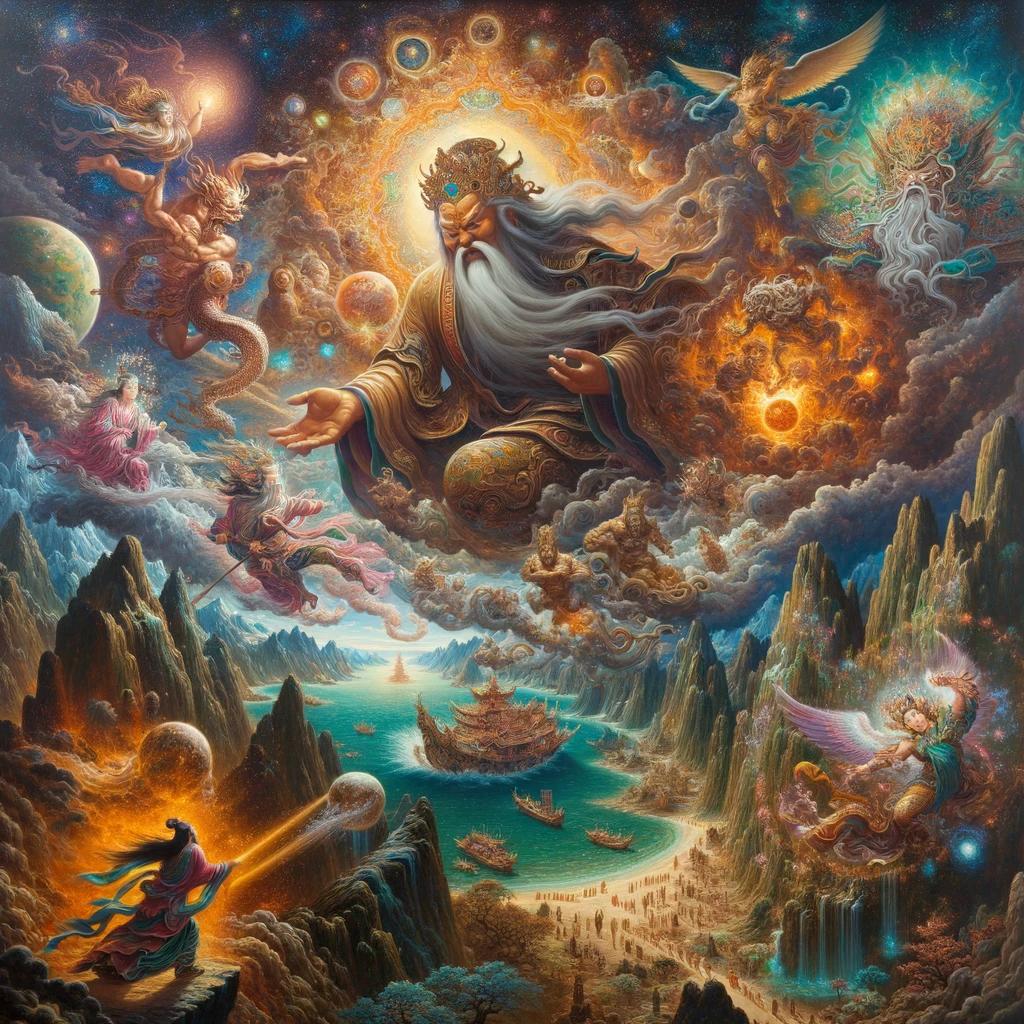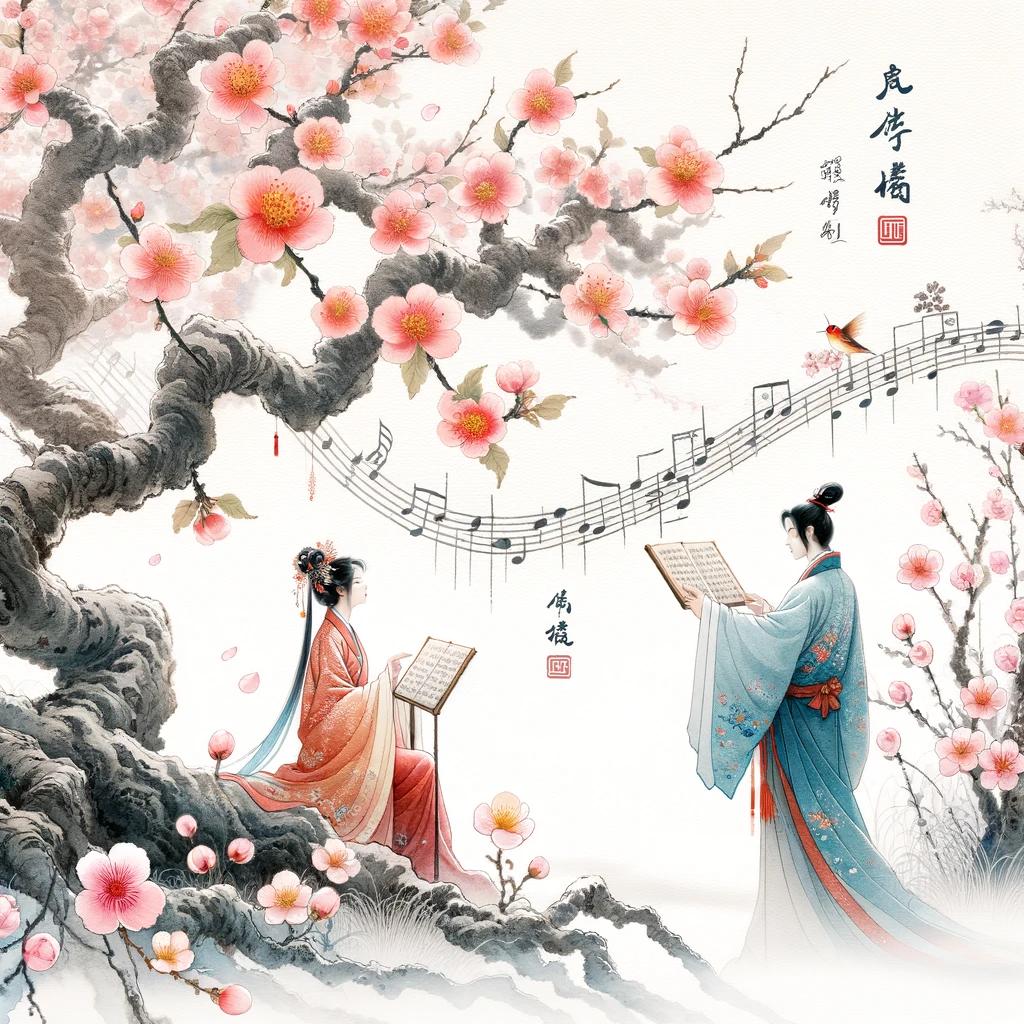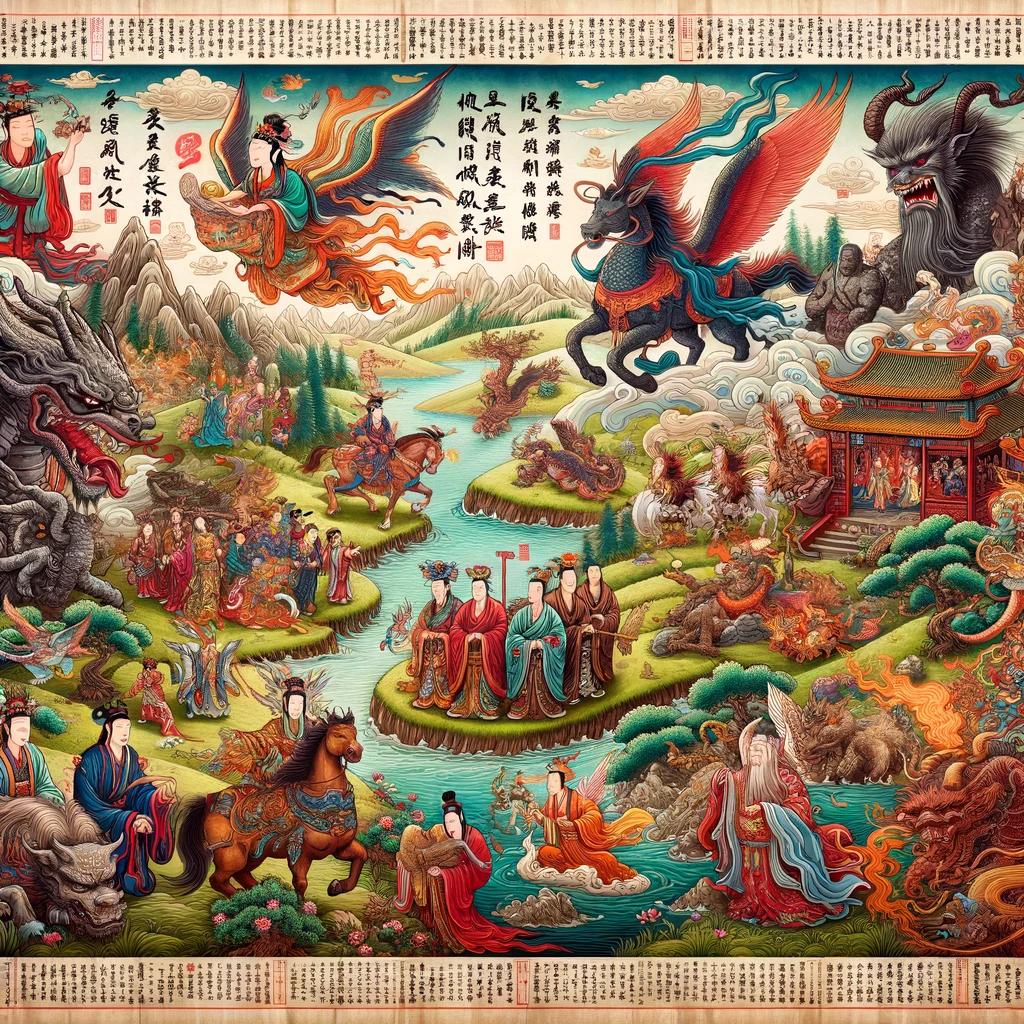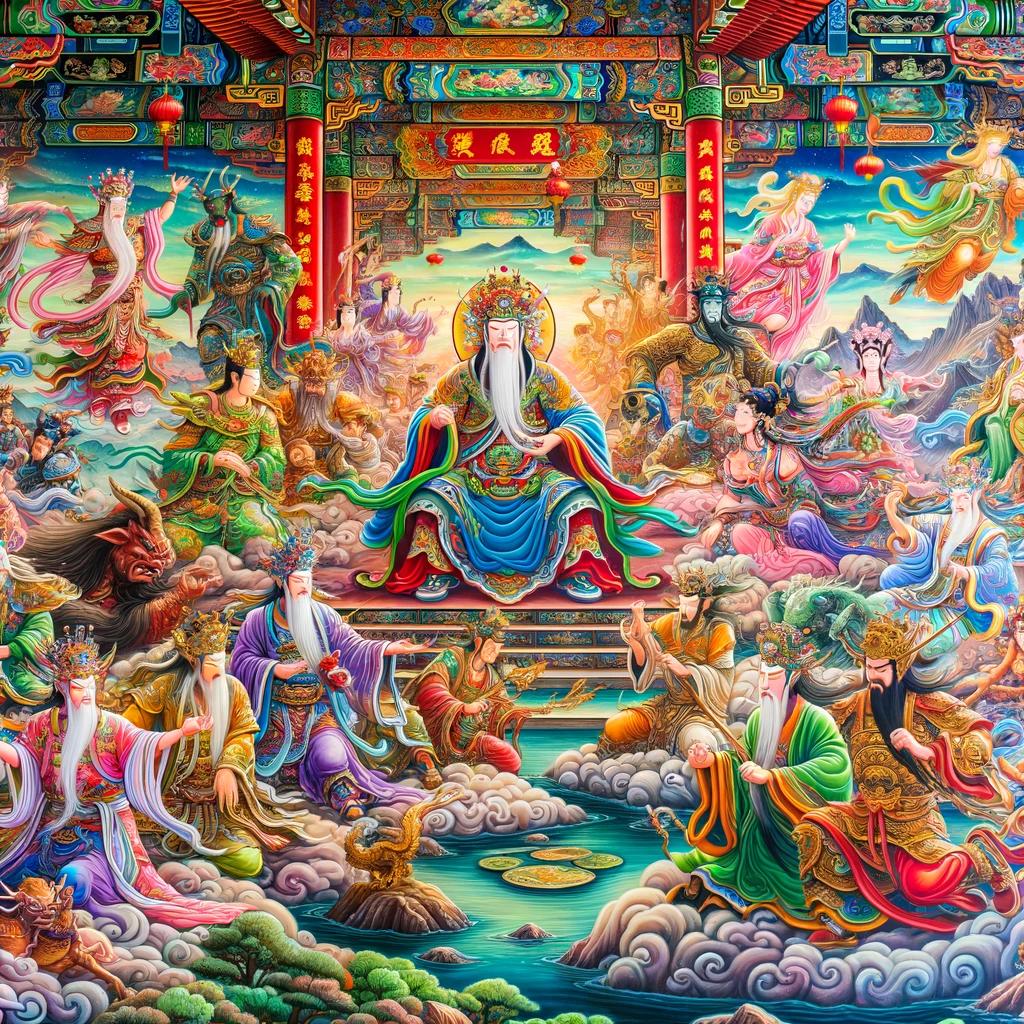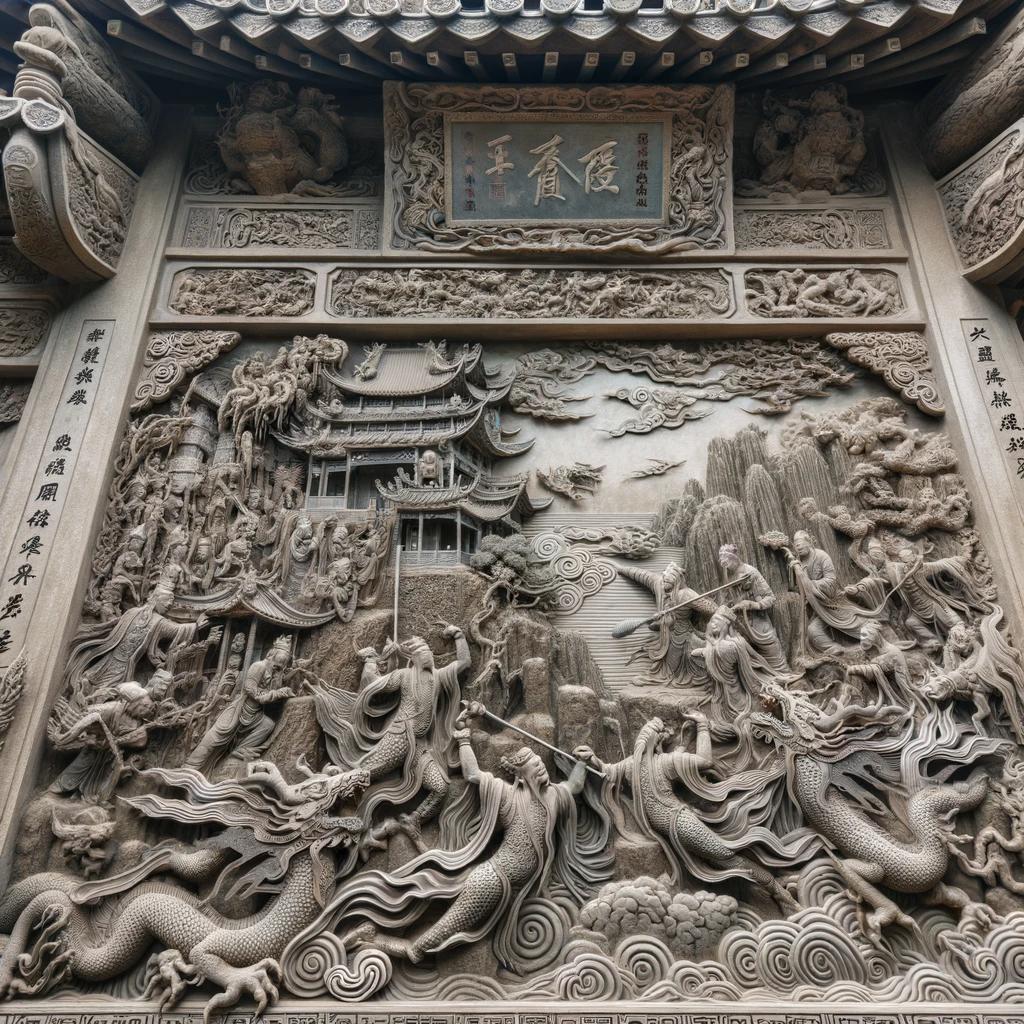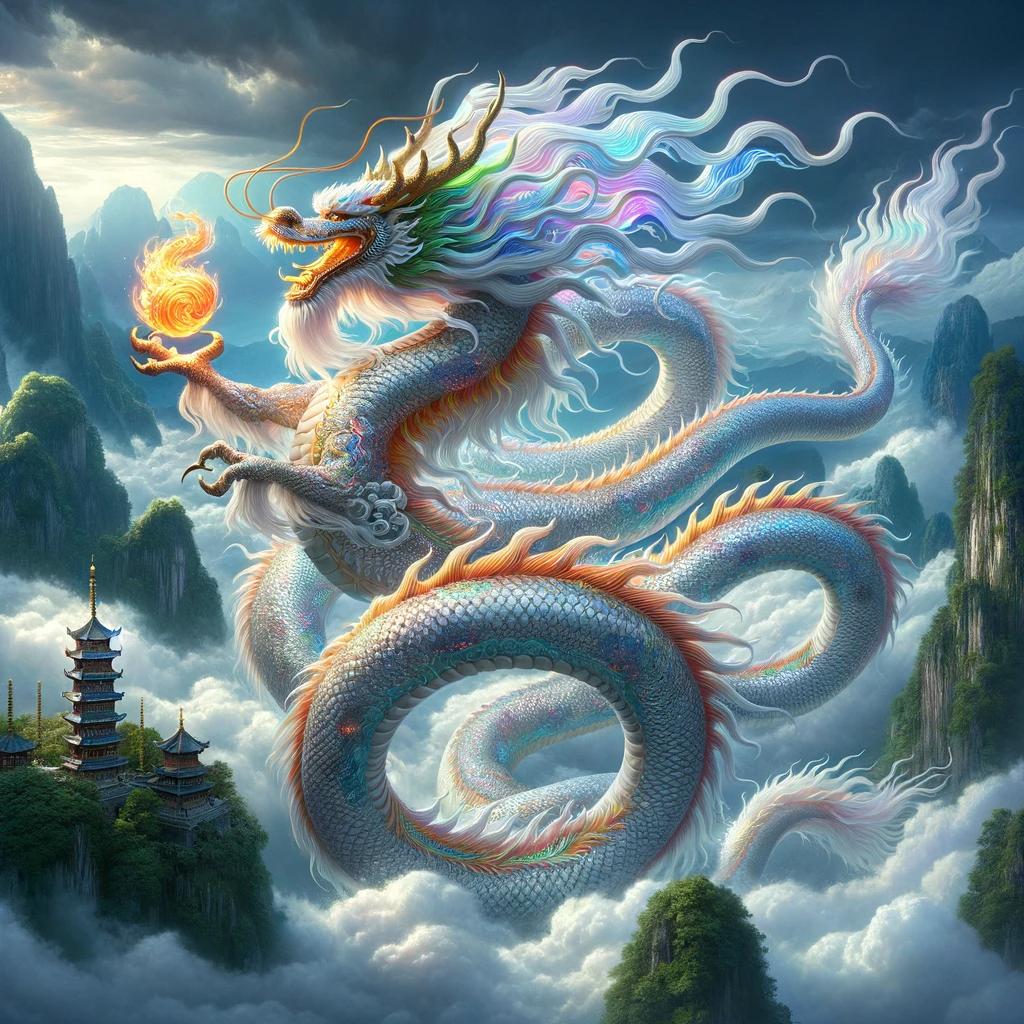Fenghuang Chinese Mythology: Exploring the Ancient Bird of Virtue and Harmony
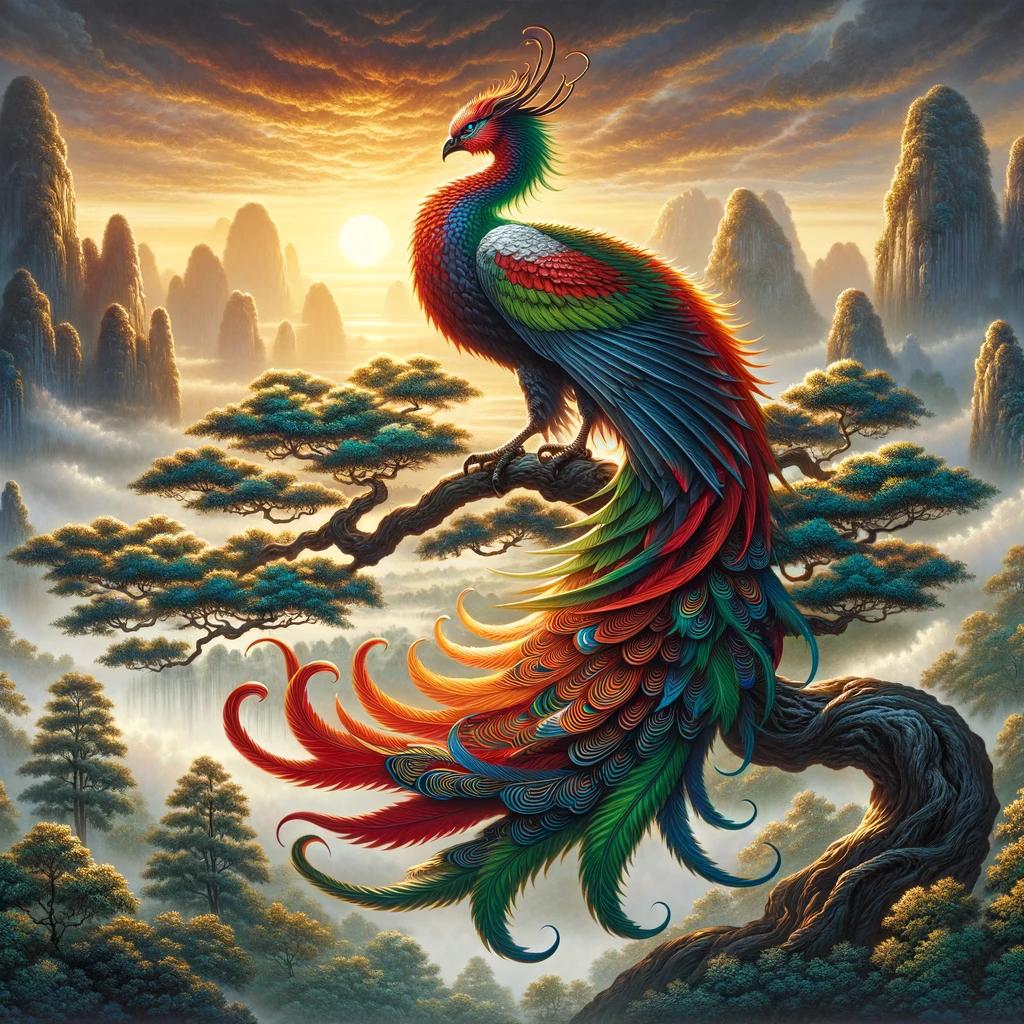
The Fenghuang, also known as the Chinese phoenix, is a mythological bird of great significance in Chinese culture. With its multicolored feathers and association with the Sun, it is considered the King of Birds, representing virtue, courtesy, benevolence, love, and faith.
This ancient legend dates back thousands of years and is a symbol of good fortune, prosperity, and the balance between yin and yang. Often depicted with a combination of various creatures’ characteristics, the Fenghuang is also linked to the dragon, representing marital harmony.
Its influence can be seen throughout Chinese history, art, and global cultures.
Origins of Fenghuang in Chinese Mythology
The Fenghuang, a mythological bird of great significance in Chinese culture, has its origins deeply rooted in ancient legends and beliefs. This majestic creature holds a prominent place in Chinese mythology and is associated with various aspects of Chinese history and culture.
The Ancient Legend of Fenghuang
According to the ancient legend, the Fenghuang is not a phoenix that rises from ashes like the Western phoenix. Instead, it is portrayed as a vibrant bird adorned with colorful feathers, resembling a pheasant.
Regarded as the King of Birds, the Fenghuang is closely linked to the Sun and embodies virtues such as benevolence, love, and faith.
Depictions of Fenghuang in Chinese Culture
The image of the Fenghuang is a common motif in Chinese art, literature, and architecture. It is often depicted in vibrant and intricate designs, symbolizing prosperity and good fortune. The bird’s elegant and regal appearance has captured the imagination of Chinese artists and has been represented in various forms, including paintings, sculptures, and decorative objects.
Symbolism and Cultural Significance of Fenghuang
The Fenghuang holds deep symbolism and cultural significance in Chinese belief systems. It is associated with the concept of harmony, representing the balance between yin and yang, the fundamental forces of the universe.
The appearance of Fenghuang is considered an auspicious omen, signifying harmony and prosperity, especially during the ascension of a new emperor to the throne.
2. Characteristics and Appearance of the Fenghuang
Description of the Fenghuang’s Physical Features
The Fenghuang is a mythical bird known for its striking physical features.
It is often described as an avian creature covered in vibrant, multicolored feathers, resembling a pheasant. With a blend of different animal characteristics, such as a rooster’s beak, a swallow’s face, a hen’s forehead, and a snake’s neck, the Fenghuang embodies a unique combination of grace and majesty.
The Five Fundamental Colors of the Fenghuang
A notable aspect of the Fenghuang’s appearance is the presence of the five fundamental colors: black, white, red, yellow, and green. These colors symbolize different elements and virtues, with black representing water, white representing metal, red representing fire, yellow representing earth, and green representing wood.
The combination of these colors on the Fenghuang’s body exemplifies the harmony and balance it embodies.
Fenghuang’s Association with Celestial Bodies
The Fenghuang is closely associated with celestial bodies, further adding to its mystical qualities. Its head represents the sky, its eyes symbolize the sun, its back embodies the moon, its wings represent the wind, its feet signify the earth, and its tail represents the planets.
This celestial connection highlights the Fenghuang’s connection to the natural world and its role as a cosmic entity.
Fenghuang in Chinese Folklore and Traditions
In Chinese folklore and traditions, the Fenghuang holds a significant role as the King of Birds, embodying noble virtues and representing the highest state of being. Its majestic presence is often associated with propitious omens and harmonious moments in history.
Fenghuang’s Role as the King of Birds
The Fenghuang is revered as the ultimate ruler among avian creatures, symbolizing power, elegance, and authority. Its magnificent presence signifies auspicious occasions and serves as an emblem of greatness and dignity.
Fenghuang’s Relationship with the Sun and the Moon
The Fenghuang has an inherent connection with celestial bodies, particularly the Sun and the Moon. The Sun represents Yang energy, while the Moon symbolizes Yin energy. The presence of the Fenghuang exemplifies the harmonious balance between these contrasting forces in the cosmic order.
Fenghuang’s Connection to Virtue and Harmony
The Fenghuang is strongly associated with virtues, including benevolence, love, and faith. Its representation in Chinese mythology signifies the pursuit of righteousness and the importance of maintaining harmonious relationships among individuals and within society as a whole.
The Fenghuang’s significance in Chinese folklore and traditions extends beyond its ornate physical appearance. Its role as the King of Birds, its relationship with the Sun and the Moon, and its connection to virtue and harmony all contribute to its esteemed position in Chinese culture and reinforce its enduring legacy.
Fenghuang and Its Link to the Dragon
Exploring the fascinating relationship between Fenghuang and the dragon unveils profound symbolism and cultural significance in Chinese mythology.
The Symbolic Relationship between Fenghuang and the Dragon
In Chinese mythology, Fenghuang and the dragon are intertwined in a symbolic relationship representing harmony and balance. The Fenghuang represents the feminine yin energy, while the dragon embodies the masculine yang energy.
Together, they symbolize the perfect balance of masculine and feminine energies, essential for marital harmony and cosmic equilibrium.
Depictions of Fenghuang and Dragon in Imperial Contexts
During various Chinese dynasties, Fenghuang and the dragon were prominently depicted in imperial contexts, emphasizing their importance. These mythical creatures adorned imperial garments, ceremonial objects, and architectural elements of palaces and temples.
Their presence symbolized the emperor’s power, legitimacy, and the union of heaven and earth.
Fenghuang and Dragon as Symbol of Marital Harmony
The combination of Fenghuang and the dragon represents not only harmony between masculine and feminine energies but also marital bliss and prosperity. Their joint presence in weddings or marital ceremonies symbolized the merging of two powerful forces, promising a harmonious and auspicious union.
The Fenghuang and dragon exemplify the ideal relationship and serve as a role model for couples in Chinese culture.
Fenghuang’s Influence in Chinese History and Art
The Fenghuang has left a significant impact on Chinese history and art, with its symbolism and representation prevalent in various dynasties and artistic expressions.
Fenghuang in Han Dynasty and Shang Dynasty
Dating back to the Han Dynasty and even earlier in the Shang Dynasty, the Fenghuang holds a prominent place in Chinese history.
It was revered as a divine creature, symbolizing the emperor’s regal power and representing the harmonious rule of the empire.
The Fenghuang’s depiction during the Han Dynasty shows its association with imperial authority and divine protection.
It appeared on various artifacts, such as pottery, bronze vessels, and jade carvings. These representations served to legitimize the rule of the emperors and showcase the importance of harmony and virtue in the empire.
Significance of Fenghuang in Imperial China
In imperial China, the Fenghuang held a crucial role as a symbol of imperial power and auspiciousness. It embodies the virtues of the emperor, such as benevolence, righteousness, and wisdom. The presence of the Fenghuang in imperial ceremonies and rituals emphasized the divine legitimacy of the ruling dynasty, ensuring good fortune, and protection.
Imperial architecture, including palaces and temples, often featured Fenghuang motifs in their decorations and designs. The presence of the Fenghuang symbolized the emperor’s authority and contributed to the grandeur and magnificence of these structures, reinforcing the belief in the emperor’s divine mandate.
Fenghuang’s Representation in Chinese Art and Literature
Chinese art and literature have been profoundly influenced by the Fenghuang’s symbolism and mythical qualities. Paintings, calligraphy, poems, and even operas often depict the Fenghuang, capturing its elegance, grace, and symbolic significance.
Famous Chinese painters, such as Gu Kaizhi and Qiu Ying, have portrayed the Fenghuang in their artworks, showcasing its majestic presence and association with virtues. In poetry, the bird’s attributes are often praised, linking it to esteemed qualities of grace, beauty, and loyalty.
- Depictions of the Fenghuang in Chinese art emphasize its multicolored plumage and regal appearance.
- Artistic representations often incorporate the bird’s association with celestial bodies and its connection to various elements of nature.
- The Fenghuang’s role as a symbol of virtue, harmony, and prosperity is highlighted through artistic expressions.
This rich artistic representation of the Fenghuang in various forms continues to inspire and captivate audiences worldwide, highlighting the enduring influence of Chinese mythology.
Modern Interpretations and Popularity of Fenghuang
Fenghuang, the mythical bird of Chinese folklore, continues to captivate and inspire people with its rich symbolism and cultural significance. In modern times, Fenghuang has found its place in various aspects of contemporary Chinese culture, showcasing its enduring popularity and relevance.
Fenghuang in Contemporary Chinese Culture
In contemporary Chinese culture, Fenghuang is often depicted in various art forms such as paintings, sculptures, and even fashion designs. Its vibrant and colorful appearance is frequently used to represent beauty, elegance, and good fortune.
Fenghuang-inspired motifs can be found in clothing, accessories, home decor, and traditional ceremonies.
Fenghuang’s Influence in East Asian Cultures
Beyond China, Fenghuang’s influence extends to other East Asian cultures, including Japan, Korea, and Vietnam. These countries have their own interpretations and myths surrounding the bird, but the core symbolism of prosperity, harmony, and virtue remains consistent.
Fenghuang’s presence can be seen in various works of literature, art, and even popular culture in these countries.
Global Awareness and Appreciation of Fenghuang
With the increasing global interest in mythology and folklore, Fenghuang has gained recognition and appreciation worldwide. Its unique characteristics and profound symbolism have captured the imagination of people from different cultures and backgrounds.
Fenghuang’s popularity has spread through international exhibitions, books, and online platforms, further solidifying its status as one of the most iconic mythical creatures.
Unraveling the Mysteries of the Fenghuang
Exploring the Symbolism Behind Fenghuang’s Unique Features
The Fenghuang, with its extraordinary appearance, holds significant symbolism in Chinese mythology. Each characteristic of this mythical bird carries a deeper meaning that enriches its cultural significance. Its combination of different creature features, such as the rooster’s beak, the swallow’s face, and the chicken’s forehead, represents the fusion of various virtues and elements.
The mythical creature’s physical attributes, including the snake’s neck, the goose’s chest, and the deer’s hind legs, contribute to its celestial representation.
Moreover, the Fenghuang’s body represents the macrocosm, with the sky embodied by its head, the sun seen through its eyes, and the moon symbolized by its back.
The wings, resembling the wind, carry the energy and power of the spiritual realm, while the feet firmly connect with the earth. Lastly, its colorful tail signifies the harmony of the planets.
The Mythological Stories Associated with Fenghuang
Throughout Chinese mythology, the Fenghuang is entwined in various captivating stories that have been passed down through generations. These ancient tales reveal the bird’s role as a divine messenger and bringer of good fortune.
Its presence in these stories often signifies the arrival of propitious events and harmonious periods. From tales of ancient emperors to legendary battles, the Fenghuang’s mythical encounters illustrate its influence on destinies and the delicate balance between worlds.
Interpreting Fenghuang’s Role in Chinese Mythology
Interpreting the role of the Fenghuang in Chinese mythology is a complex endeavor. This enigmatic creature embodies virtues such as benevolence, love, and faith, and is revered as a symbol of honor and virtue.
Its association with the dragon exemplifies the harmonious union between yin and yang and represents marital bliss. The Fenghuang’s relationship with celestial bodies showcases its connection to the cosmos and its role in maintaining spiritual balance.
In conclusion, unraveling the mysteries of the Fenghuang invites us to delve into its symbolism and mythological narratives. It offers a profound understanding of the cultural significance and beliefs that have shaped Chinese history and art.
Exploring the symbolism behind its unique features and interpreting its role in ancient tales allows us to appreciate the depth and richness of the Fenghuang’s place in Chinese mythology.
.

